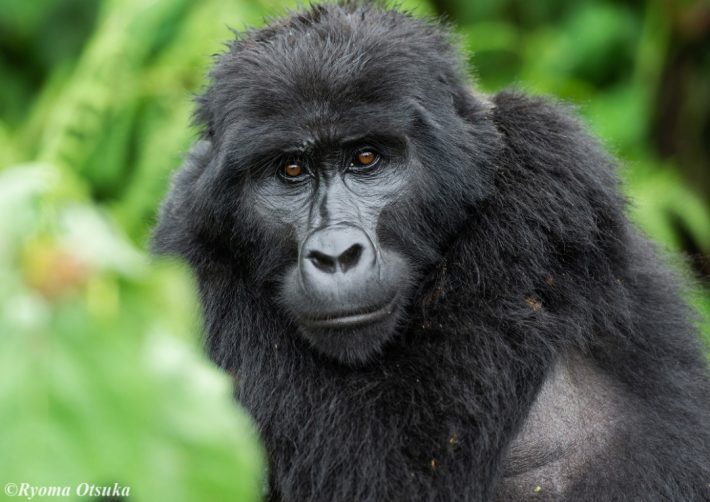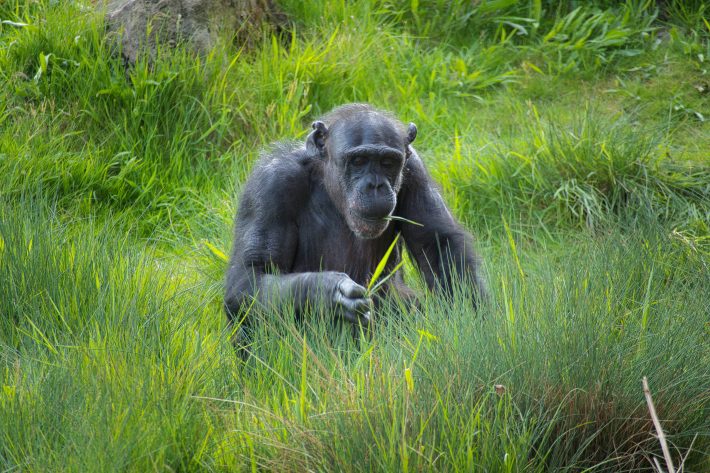Scientists study tourists to protect great apes from disease transmission
University of Exeter press release.
Researchers are protecting great apes from diseases by studying the behaviour and expectations of tourists who visit them. Their findings are published in the British Ecological Society journal People and Nature.

Humans are great apes, and this close genetic link makes non-human great apes (bonobos, chimpanzees, eastern gorillas, western gorillas and orangutans) vulnerable to our infectious diseases.
In the new study, by an international team including the University of Exeter, NOVA University Lisbon and Ugandan NGO Conservation Through Public Health, almost 1,000 tourists or potential future tourists completed an online questionnaire.
Willingness to comply with disease prevention measures like wearing a facemask varied depending on factors such as nationality, expectations about the visitor experience and whether people thought specific disease-risk measures were effective.
In the face of growing threats from future pandemics, we must minimise disease transmission
The study was conducted in the early stages of the COVID-19 pandemic, when the researchers also created the Protect Great Apes from Disease initiative.
“We have developed visitor education and guide-training materials for use in African sites of great ape tourism,” said lead author Dr Ana Nuno, of NOVA University Lisbon and the University of Exeter.
“To do so, we first explored what factors seem to affect visitors’ compliance with disease mitigation measures.
“This included asking them about their actions on previous visits, their willingness to comply in future and exploring what factors should be promoted to increase their willingness to follow recommendations.
“To do so, we adapted a tool from the health literature which is commonly used for understanding why individuals may or may not act in the face of a threat to health.”

Dr Kim Hockings, from the Centre for Ecology and Conservation on Exeter’s Penryn Campus in Cornwall, added: “Through this greater understanding of the visitors to wild African great ape tourism sites, we were able to identify ways of improving measures to reduce disease transmission.
“This is important not only for COVID-19 but other infectious diseases too, particularly at the early stages of future pandemics when information is generally limited but preventive action is required.
“In the face of growing threats from future pandemics, we must minimise disease transmission while ensuring that tourism and research promote long-term support for the conservation of great apes and their habitats as well as maximising benefits for local communities.”
The questionnaire was completed by 420 past visitors and 569 potential future visitors (from 58 countries in total) to wild great ape tourism sites in Africa.
This is important not only for COVID-19 but other infectious diseases too
When compared to other disease-mitigation measures, visitors expressed less willingness to being vaccinated against COVID-19 (which, at the time the survey was conducted, had only just started being administered to very high-risk groups), wearing a facemask during trekking (although willing when viewing the apes) and quarantine after international travel before visiting great apes.
Believing that each specific measure was effective in preventing disease was key to respondents’ willingness to follow that specific recommendation.
The research team included the Helmholtz Institute for One Health (Germany) and the University of the West of England (UK).
You can access the full research article for free here:
https://besjournals.onlinelibrary.wiley.com/doi/epdf/10.1002/pan3.10396
Like what we stand for?
Support our mission and help develop the next generation of ecologists by donating to the British Ecological Society.